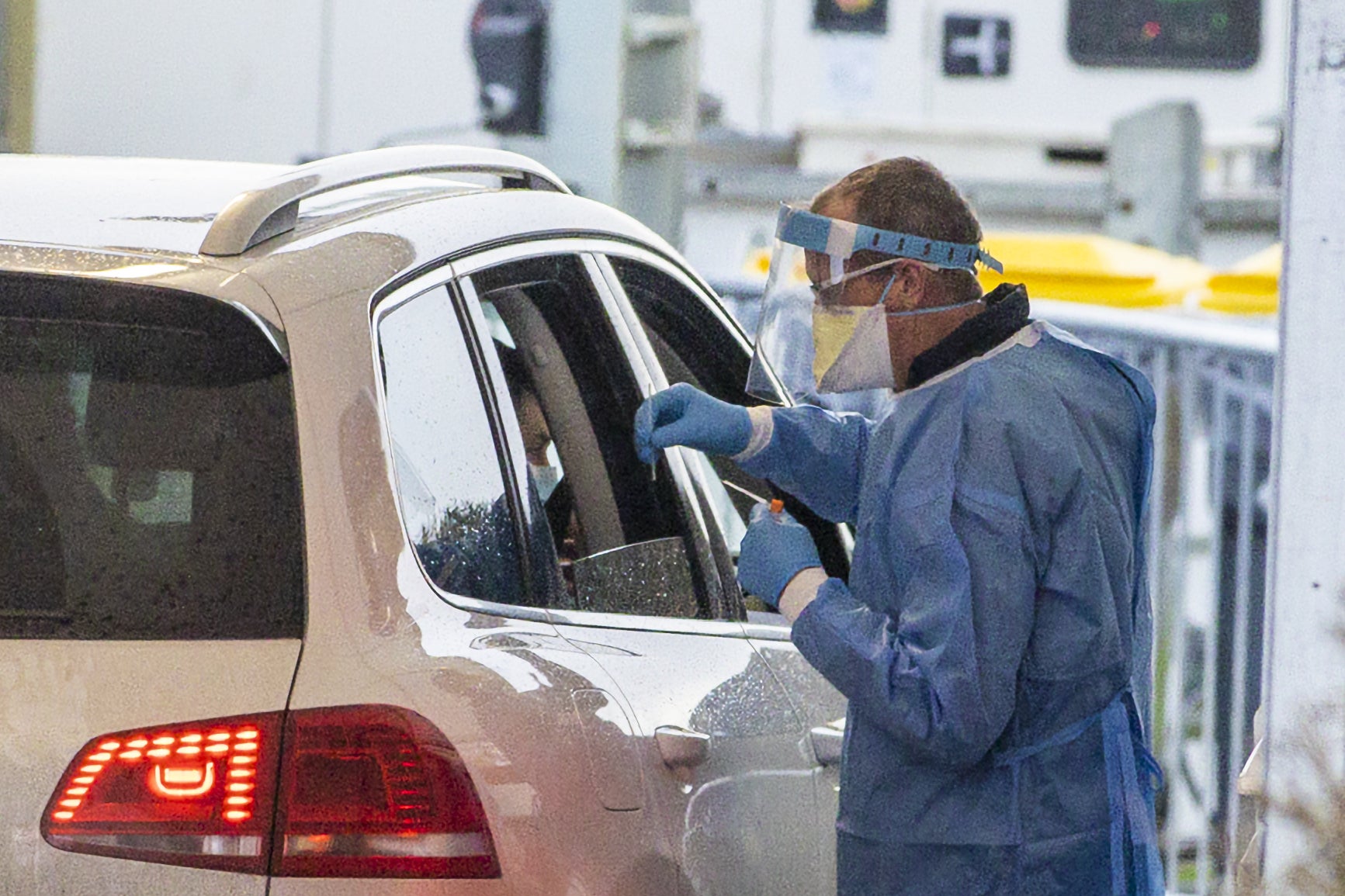‘Up to one in 10’ in Northern Ireland had Covid-19 over festive period
Professor Ian Young said with a limit on the number of available PCR tests means figures will not pick up all cases in the community.

It is likely that as many as one in 10 people in parts of Northern Ireland had Covid-19 over the festive period, the region’s chief scientific adviser has said.
Professor Ian Young said one in 20 tested positive in some areas, but with limits on PCR tests it is likely the true figure was as high as one in 10 last week.
The latest figures from the Department of Health published on Tuesday, revealed a further 15 deaths of patients who had previously tested positive.
The figures, which cover from midnight on December 30 to midnight on January 3, also notified 30,423 new cases over four days.
Prof Young told the PA news agency that the virus is transmitting at “extraordinarily high levels in the community” – higher than at any previous stage of the epidemic.
“Omicron is very, very transmissible compared with other forms of the virus so what we’re seeing is a very rapid rise to a peak and then hopefully an equally rapid fall after that,” he said.
“There are parts of Northern Ireland where close to one person in 20 had a positive PCR test in the last week, and whenever you factor in the fact that not everybody gets tested then it is very likely that there were parts in Northern Ireland where at least one person in 10 had the virus last week.
“I don’t think we’re quite at the peak in terms of case numbers yet but because we only have 20,000 tests a day available to us, roughly, in terms of PCR, it’s going to be the case that increasingly the actual case numbers we measure aren’t everybody who has the virus in the community.
“I don’t think we’ll see numbers rise a lot more than they are at the moment but the virus will continue to increase probably for one to two weeks.”
The Stormont Executive is to meet on Thursday to hear the latest updates in the pandemic.
Prof Young said any decision over further restrictions is for ministers to make, but any interventions at this stage in the Omicron wave would be less likely to be effective
Prof Young said he expects the peak in the Omicron surge in early to mid January.
In terms of hospital admissions and occupancy he said expects a peak in mid to late January.
He said any restrictions “will always have some impact in terms of slowing down or reducing the rate of transmission”, but would take around two weeks to affect case numbers and longer for hospital numbers.
“Given the speed of this wave then intervention would have less effect now than it would have done earlier on,” he said.
The hospital occupancy rate has been put at 105%.
On Tuesday morning there were 348 Covid-positive inpatients in hospital, with 31 in intensive care.
Prof Young described pressures in hospitals as “severe” and said the expected further increase in admissions will make things challenging.
He encouraged the public to get vaccinated and follow public health advice.
“Boosters are the most effective way of protecting people against severe illness which leads to hospitalisation. It is still possible to become infected with the virus even after a booster but you’re much less likely to need admission to hospital and that’s becoming increasingly clear,” he said.
He also urged the following of guidance such as those with symptoms not mixing with other people, meeting outdoors where possible or well-ventilated indoor settings, wearing face coverings and making use of lateral flow tests, particularly before mixing with others.
Prof Young said the Delta variant is still circulating in the community but numbers have been falling steadily.
“It is outcompeted effectively by Omicron and as a result Delta is fading away, probably more rapidly than would have been the case if we hadn’t had the Omicron form of the virus,” he said.
“We have known for quite a while that Omicron is significantly less severe than Delta in terms of disease – the estimates were initially somewhere between 20%-80% less severe.
“We still need more information on that but increasingly it looks as though it is more likely to be towards the 50%-80% end of severity rather than 20%-50%… so that’s good news and that should help to protect our hospitals against very large numbers, although admissions are rising, hospital occupancy is rising… and this is still going to be a very significant wave in terms of hospital pressures, particularly when combined with the number of staff who may be absent as a result of being infected.”
Bookmark popover
Removed from bookmarks